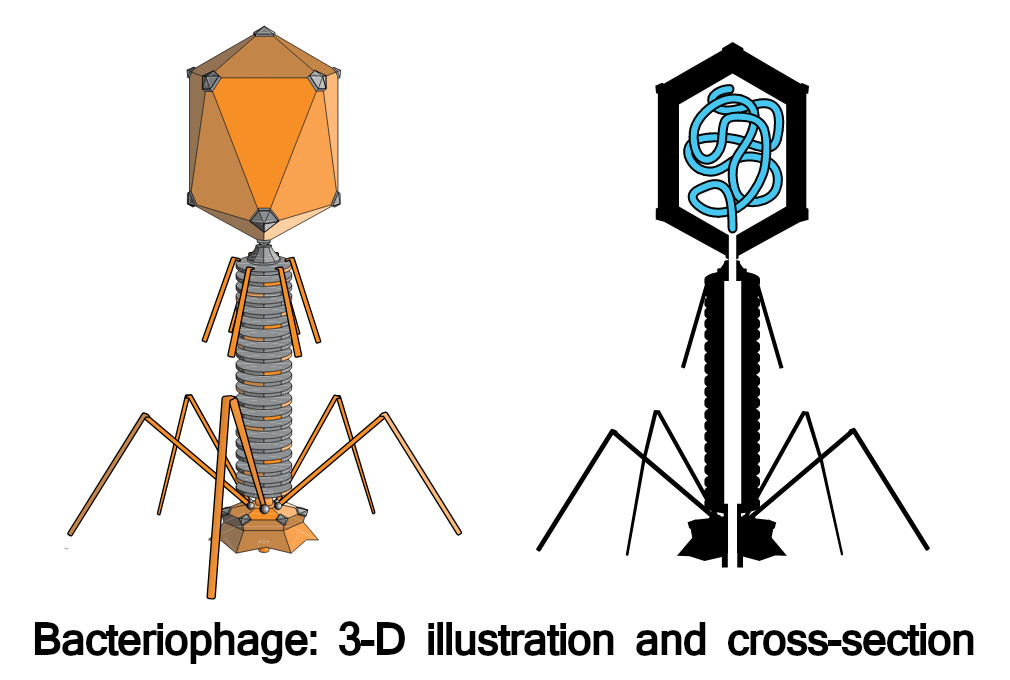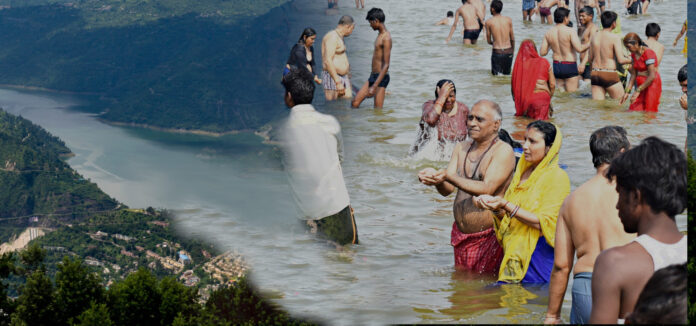Manoj Pandey*
The Ganga is revered as the holiest of rivers by the adherents of religions that originated in India. Common-sense dictates that this is because of the vastness of the river and its importance for the livelihood of people in its basin and beyond. Many cities arose around the river and some of them became religious centres for one of the biggest religions of the world, the Hinduism. For the Hindus, Ganga is also a divine river, because according to Hindu belief, it was brought to the earth from the heaven by a saint – Bhagirath – after years of hard penance.
Traditionally, for Hindus, the water of the holy river (Gangajal) has had a special significance. They have been visiting the river from far-away places to bathe in it and carrying its water to their homes. Gangajal is sprinkled on objects, especially before a religious ceremony, to purify them. While modern Hindus do not attach much importance to Gangajal, it was part of Hindu rituals till a couple of generations back.
The exceptional property of Gangajal to self-purify and purify other water, while other waters would spoil over time, might have contributed to the divinity of river Ganga.
The largest religious fair on the earth – Kumbh mela – is held at Haridwar and Prayagraj on the banks of the Ganga (besides at Ujjain, on the banks of river Shipra, and Nashik, on the banks of the Godavari). Millions of people bathe in the river during the fair.
This notion of purity of Ganga water drew the attention of European microbiologists towards the late nineteenth century. A British bacteriologist working in India, E H Hankin, who had been making systematic observations on the purity of Ganga’s water and spread of cholera around the river, published a research paper in 1896, in which he showed that the waters of Ganga and Yamuna could kill cholera bacteria. Two microbiologists from Europe then studied Ganga water and found it effective against some other diseases.
For years, the reason for this exceptional quality of Ganga’s water remained an enigma. It looked to be some sort of microbe that passed the membranes that could filter out bacteria. It was later discovered that this property arose from the presence of some types of bacteria-eating viruses (=bacteriophages) in Ganga’s water.
The interesting story of E H Hankin finding the purifying factor in Ganga water and yet not finding it!
Hankin was a pioneering researcher into the purifying properties of Ganga water. His primary work was to study infectious diseases, but he spent a long time on the banks of the Ganga, vising places and collecting samples year after year, mystified with the way cholera spread – and did not spread – in the region. His experiments and observations showed that when the filthy water coming out of city drains was mixed with tap water, the water became full of bacteria in a few hours. However, when gutters joined the river Ganga, bacteria in the enormously contaminated water died in a few hours.
Cholera was widely prevalent at that time due to many factors, the major ones being large cities, dense population, and unhygienic ways of waste disposal. Corpses of people dying with cholera were also disposed of in large numbers on the banks of the Ganga and its tributaries. However, cholera did not spread the way it should have, around the Ganga.
Hankin wrote that the rivers of European cities were much filthier and full of bacteria while the waters of Ganges and Jamuna were clean, despite the supposed cleanliness of European cities and dirty ways of the Indians.
In 1896, Mark Twain met Hankin on his visit to India. His description of what he saw needs no elaboration:
“He went to Benares and made his tests. He got water at the mouths of the sewers where they empty into the river at the bathing ghats; a cubic centimeter of it contained millions of cholera germs; at the end of six hours they were all dead. He caught a floating corpse, towed it to the shore, and from beside it he dipped up water that was swarming with cholera germs; at the end of six hours they were all dead. He added swarm after swarm of cholera germs to this water; within six hours they always died, to the last sample. Repeatedly he took pure well water which was barren of animal life, and put into it a few cholera germs; they always began to propagate at once, and always within six hours they swarmed—and were numberable by millions upon millions…
“For ages and ages the Hindoos have had absolute faith that the water of the Ganges was utterly pure, could not be defiled by any contact whatsoever, and infallibly made pure and clean whatsoever thing touched it. They still believe it, and that is why they bathe in it and drink it, caring nothing for its seeming filthiness and the floating corpses. The Hindoos have been laughed at, these many generations, but the laughter will need to modify itself a little from now on. How did they find out the water’s secret in those ancient ages? Had they germ-scientists then? We do not know.”
Though Hankin found that there was something in Ganga water that could pass through bacteria-filter, which was responsible for killing the bacteria, his research was not paid much heed by the scientific community. It was nearly two decades later that they discovered the existence of bacteria-eating viruses.
It is said that Hankin was so discouraged that he developed doubt in the scientific validity of his own studies.
When an enemy’s enemy is your friend!
It is now established that Ganga water’s bacteria-killing property is due to bacteriophages, the viruses that kill bacteria. Since bacteria are responsible for a large number of infectious diseases of animals and plants, bacteriophages seem to be our best friends against many diseases.
Bacteriophages are known to be present everywhere on the earth, especially in freshwater and marine water. Bacteriophages have been found in rivers across the globe.
Most bacteriophages have a typical structure, which when magnified a million times, looks like a satellite on top of a spring rocket ready for take-off.
Since bacteriophages do not harm animals or plants, they can offer safe treatment for many infectious diseases. In fact, just after they were discovered, scientists in Europe and Russia started experimenting with this idea. However, soon after that, penicillin was discovered as an effective treatment against bacterial infections, and interest in phage-therapy declined.
Beyond Hankin
Not much research has taken place on Ganga water. Whatever little research has been done, it has corroborated earlier results.
In a recent study, it was found that bacteria-eating viruses are present in Ganga water right from the river’s origin at Gaumukh. One argument given to explain this is that when the Himalayas rose due to joining of Eurasian and Indian tectonic plates, sea water of the ocean of that time (Tethys) was trapped along with living beings and viruses. The bacteriophages present at Gaumukh might have come from that stock. But that does not explain why other rivers originating in the Himalayas do not have this property.

Another interesting thing found about bacteriophages in river Ganga is that though their numbers go down as the river gets highly polluted in its lower stretches, they do survive and are effective even at Gangasagar where the river meets the sea after travelling 2500 km.
Scientists have discovered many such viruses not known before (about 1100) from the Ganga, and they believe that many more are yet to be discovered.
It has also been found that specific bacteriophages taken out of Ganga water and grown in the lab have the potential to kill pathogens that cause many human and animal diseases. Ganga water is also found to be effective in healing of obstinate wounds.
Ganga water’s bacteria-killing viruses have been found to be effective against tuberculosis, typhoid, pneumonia, cholera, dysentery, diarrhoea and meningitis. The role of Ganga bacteriophages in combating infections that attack human immune system has also been documented, and is being further studied for practical applications.
From a scientific point of view – detached from faith – there seems to be a valid reason why Gangajal has traditionally been used during Hindu rituals. Once it was well-known that Gangajal had amazing purifying properties, it was put on stored water before people used it for cleaning oneself, especially before religious rites. Gangajal was also poured in newly-constructed wells and sarovars or ponds maintained for bathing at temples. Perhaps the sprinkling of Gangajal on the dead body and putting it in the mouth of the dead served the purpose of keeping the body from rotting until it was cremated. Perhaps the importance of disposing of dead bodies on the banks of river Ganga also took birth from the discovery of purifying properties of its water.
In absence of comparable research into the self-purifying capacity of other rivers, it cannot be said with certainty whether river Ganga is unique in its purifying properties or there are also other rivers that have purifying properties of the same level.
It has been documented that the purifying properties of river Yamuna – the main tributary of Ganga – are lower as compared to the Ganga. Studies in Yamuna and Narmada waters have shown that though they too contain bacteria-killing viruses, their numbers and diversity are much less as compared to those in the Ganga.
In one study, river Ganga water was found to self-purify 15-25 times faster than that of some other rivers. The oxygen-carrying capacity of the river was found to come back soon after it was polluted, sometimes as soon as one hour.
A 2009 study found that Gangajal stored for even 9 years had the ability to kill E.coli (one of the bacteria found in human guts, which finds its way into sewage and is responsible for most cases of diarrhoea), and that stored for 16 years was cleaner than boiled water.
In a recent study, it was found that mosquito breeding was slower in upper reaches of the Ganga, and also in water to which Gangajal had been added.
As of now, Ganga water is known to be effective only against bacterial infections and putrefaction. During the peak of Covid-19 – a viral disease – some serious proposals to study Ganga water as a potential cure for the disease could not see the light of the day due to poor ‘proof of concept’ (that is, Ganga water’s special property comes from bacteriophages, and they cannot kill viruses). However, the jury is still out on possible therapeutic properties of Ganga water beyond killing certain harmful bacteria.
It also needs further study to ascertain whether the special property of Ganga water comes from bacteriophages alone or there are some other factors – perhaps some trace minerals, a radioactive substance, a mix of many factors, or something beyond these. At least one research project is ongoing to explore the factors contributing to this property of Ganga water in totality.
Kill the river, pour Gangajal on it
The mighty river and the tiny bacteriophage – both have succumbed to the sheer human load added with disregard for nature. There is a limit to which a river can self-purify. When you put millions of tonnes of filth into it year after year, after sucking much of its water for drinking and irrigation, what remains is a filthy drain – more so once it passes through farmlands, ghats, cities and industrial belts.
Despite expenditure running beyond Rs. 13,000 crore on the earlier Ganga Action Plan and the present Namami Gange project, recent studies have found Ganga water next to big cities full of E.coli bacteria, harmfulchemicals and filthy suspension, and severely lacking in dissolved oxygen. In fact, such water is found to contain a big quantity of anti-biotic resistant bacteria. Once these travel to humans, these make the treatment of common diseases with anti-biotic medicines more difficult.
So, we are on the path to converting a purifying river to a disease-spreading river. As a tribute to the river we are intent to kill, we should arrange some clean Gangajal to put in its mouth.
Further reading
- A British scientist’s quest to scientifically explain the ‘mythical powers of the Ganges’
- A Review on a Unique Property of Ganga Jal
- Can Ganga water treat Covid-19? ICMR says no to study, need more data
- Ganges: special at its origin
- Invisible Empire: The Natural History of Viruses
- Phages from Ganges River curtail in vitro biofilms and planktonic growth of drug resistant Klebsiella pneumoniae in a zebrafish infection model
- The virus in the rivers: histories and antibiotic afterlives of the bacteriophage at the sangam in Allahabad

*Manoj Pandey is a former civil servant. He does not like to call himself a rationalist, but insists on scrutiny of apparent myths as well as what are supposed to be immutable scientific facts. He maintains a personal blog, Th_ink
Disclaimer: The views expressed in this article are the personal opinion of the author and do not reflect the views of raagdelhi.com which does not assume any responsibility for the same.



